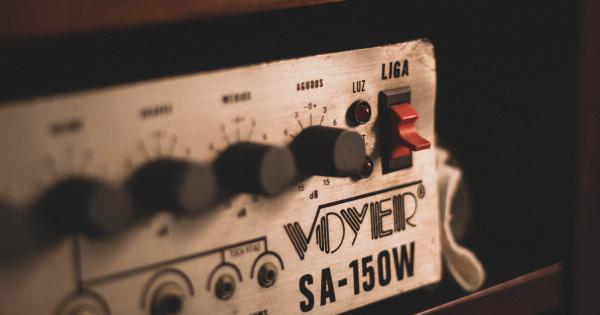Music has been an integral part of human culture for centuries, but did you know that it can also be used as a powerful form of medicine? Music medicine, also known as music therapy, is a holistic approach that utilizes the healing power of sound to promote physical, emotional, and mental well-being. In this comprehensive guide, we will dive into the world of music medicine, exploring its history, benefits, different techniques, and how it can be incorporated into various healthcare settings.
The History of Music Medicine
The therapeutic use of music has roots that can be traced back to ancient civilizations such as Egypt, Greece, and China.
These ancient cultures recognized the healing properties of music and used it in rituals and ceremonies to induce relaxation, alleviate pain, and promote healing. However, the formal practice of music therapy as we know it today emerged in the 20th century.
During World War II, musicians were enlisted to visit hospitals and play music for wounded soldiers. It was observed that these musical interactions had a profound impact on the soldiers’ physical and emotional well-being.
This led to the establishment of music therapy as a profession, with the first academic program in music therapy being founded in the United States in the 1940s.
Benefits of Music Medicine
The therapeutic benefits of music medicine are vast and can be experienced by people of all ages and abilities. Here are some of the key benefits:.
1. Reduction of Anxiety and Stress
Listening to calming music or engaging in active music-making can help reduce anxiety and stress levels. Slow and soothing melodies can slow down the heart rate, lower blood pressure, and induce a state of relaxation.
2. Improvement of Mood and Emotional Well-being
Music has the power to evoke emotions and stimulate positive feelings. It can enhance mood, lift spirits, and provide an outlet for emotional expression.
Listening to uplifting music can be particularly beneficial for individuals dealing with depression or sadness.
3. Pain Management
Music has been shown to alleviate pain and provide distraction from physical discomfort. Research suggests that listening to music releases endorphins, which are natural painkillers produced by the brain.
4. Enhancing Cognitive Function
Engaging in musical activities, such as playing an instrument or singing, can improve cognitive abilities. Music stimulates various areas of the brain, enhancing memory, attention, and problem-solving skills.
It has also shown promise in helping individuals with neurodevelopmental disorders like autism and ADHD.
5. Boosting Immune System
Studies have shown that listening to music can have a positive effect on the immune system. It strengthens the immune response by increasing the production of antibodies and improving the efficiency of cells that fight off pathogens.
Techniques in Music Medicine
There are several techniques used in music medicine to achieve therapeutic outcomes:.
1. Passive Music Listening
Passive music listening involves simply sitting or lying down and listening to calming or uplifting music without any active participation. This technique is often used to promote relaxation, reduce stress, or induce sleep.
2. Guided Imagery with Music
Guided imagery with music is a technique that combines music with visualization exercises. A trained music therapist guides the listener through a journey, using music to create a specific atmosphere or emotional state.
This technique can be used for emotional exploration, self-reflection, or stress relief.
3. Songwriting
Songwriting is a therapeutic technique that allows individuals to express their thoughts, emotions, and experiences through songwriting. It can be a powerful tool for emotional healing, self-expression, and personal growth.
4. Music-Assisted Relaxation
Music-assisted relaxation involves using music to induce a state of deep relaxation. This technique often incorporates slow, rhythmic music, deep breathing exercises, and muscle relaxation techniques.
5. Active Music-Making
Active music-making involves engaging in musical activities such as playing instruments, singing, or dancing. This technique encourages self-expression, creativity, and social interaction.
It can be particularly beneficial for individuals with cognitive or physical disabilities.
Applying Music Medicine in Healthcare Settings
Music medicine can be applied in various healthcare settings to enhance patient care and promote well-being. Here are some examples:.
1. Hospitals
In hospitals, music medicine can be used to alleviate anxiety and stress in patients undergoing medical procedures or recovering from surgery.
It can also provide comfort and emotional support for patients in palliative care or those dealing with chronic pain.
2. Mental Health Facilities
In mental health facilities, music therapy can be an effective adjunct to traditional therapy. It can help individuals manage symptoms of mental illnesses, improve self-esteem, and enhance communication skills.
3. Rehabilitation Centers
In rehabilitation centers, music therapy can assist in the recovery and rehabilitation of individuals with physical injuries or disabilities. It can improve motor skills, cognitive functioning, and emotional well-being.
4. Senior Care Facilities
In senior care facilities, music medicine can help improve the quality of life for older adults. It can reduce feelings of isolation, stimulate memory recall, and promote social interaction.
Conclusion
Music medicine is a powerful and versatile form of therapy that holds immense potential for promoting healing, enhancing well-being, and improving quality of life.
Whether it’s passive listening, active music-making, or guided imagery with music, the therapeutic benefits of music are undeniable. As the field of music medicine continues to grow, it has the potential to revolutionize healthcare, providing a holistic approach to healing that harnesses the innate power of sound.


























